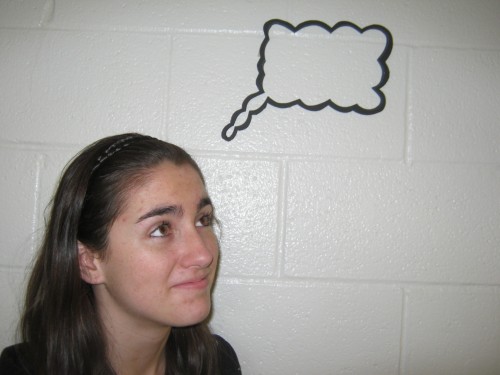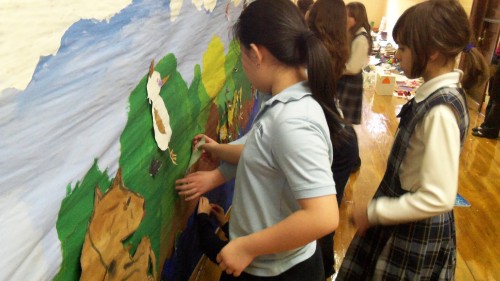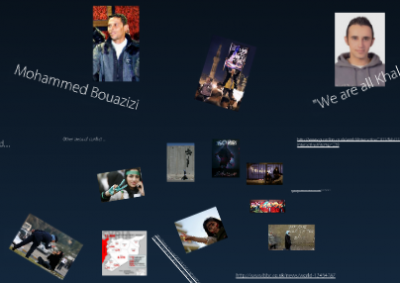This is a three-part series that will share the experiences of three Art21 Education staff members (Jessica Hamlin, Joe Fusaro, and Flossie Chua) after spending a year with a group of 16 incredible teachers. Each of us has a unique perspective on the past twelve months and this series will ruminate on what it means to teach with contemporary art, specifically contextualized by our experiences this year working with the Art21 Educators program.
Many folks in the education world are breathing a huge sigh of relief, anticipating a well deserved and much needed summer break. Instead of heading to the beach, here at Art21 we are gearing up for the beginning of another year of Art21 Educators and a new cohort of teachers joining us from around the country. So this seems an important juncture to take stock.
I wanted to put together a collection of anecdotes and moments from the year and describe how they represent, for me, some of the most important ways that contemporary art can change the way we approach education – both in the arts and across disciplines. The work of the teachers in this program goes against the rising tide of standardization and bureaucratization of teaching and learning. In my mind, both of these acts – teaching and learning – can and should be the most magical and creative of acts….
1. I adore questions. I think of them as mini-universes for thinking. Throughout the Art21 Educators program we talk a lot about how ideas, rather than specific skills or products, should drive how and what we teach. Consider the metaphor of curriculum as a vehicle – one we can get inside and drive around in. This car (Honda, Mazerati, Ford—you pick) is an opportunity to travel around and investigate the important issues and events of the past and present – to road trip! And to road trip in that radically self-altering kind of way, to discover what it means to be human—to be an individual, and to be part of a complicated and expansive world. Here is a list of some of my favorite questions from the year:
- Can words change the course of history?
- How do our lives intersect with fact and fiction?
- How does geography influence issues of power?
- What can art do in public spaces?
- What is the relationship between collective and individual memory?
2. Once you find a good question it naturally follows that you have to figure out how and where to take your car/curriculum. With a good question there is no single answer, there are a multitude of possible directions and places to get to. The journey inspires the answers. Many teachers dove deep into their own process this year, as well as looked seriously at how they might make their students more aware of their creative process. Shifting from a product-centric idea about teaching to a process oriented one, is tough. It requires a lot more work, and you’re also out on a limb for most of it since you don’t have a pre-determined answer…. How do you encourage middle school students to see and be self-conscious about their own thinking and decision-making? How do you get adults to do this? Like many teachers in the Art21 Educators program, Karen Melvin teaches 8th grade (at Thomas Jefferson Middle School in Pittsburgh, PA) and started by introducing artists who talk about choices: Mark Bradford selecting found materials from the city, Janine Antoni describing the stories found in the work Moor, Oliver Herring asking people to spit food dye at each other. Each of these artists suggest the infinite ways of not only making things but the erratic and unpredictable ways the human brain can experiment, play, seek, and alight upon new ways of thinking and doing.
3. Fourth grader teachers have a lot to cover each year in New York state: literary response and analysis, research and information organization, language conventions, algebraic representations and mathematical models, probability, the scientific method, music appreciation, teamwork and sportsmanship, ecosystems, Native American cultures of the state, physical landforms and bodies of water, and the principles of art and design are just a small fraction of the topics and skills outlined in the curriculum. To generate a broader investigation that could encompass a wide range of disciplinary understandings and skills, generalist teacher Mary Curry and art teacher Jeannine Bardo embarked on a semester-long investigation of the Hudson River (both teach at St. Ephrem School in Brooklyn, NY). In addition to historical texts, primary sources, and non-fiction accounts, renderings of the Hudson River in 1609 were connected to Mark Dion’s Vivarium and the art of contemporary terrariums and landscaping. Students created a 30-foot long mural of the Hudson as it might have looked before it was “discovered” and settled by Europeans, as well as individual terrariums with an imagined or fictional moment that would contribute to a new history of the river.
In the process of creating this mural Jeannine and Mary captured a moment on video as several girls debate the placement of a Heath Hen (an extinct bird of prey from New York state) in the mural. In the short clip we see the way that each of them is trying to think through how and why to represent an idea, without the superficial prodding of an adult. Apparently someone had accidentally cut off the turtle’s head and they were trying to make it look like the bird had eaten it. As Tara explains in the video, a turtle under attack would duck its head back into the shell–hence an ecologically sound explanation for the missing head. Even as they waiver back and forth between substantial argument and being self-conscious about whether they are “over thinking” their decisions, in the end they are all deeply engaged and specific in their thinking. It is an unassuming moment, one that might have gone unnoticed, but in it I see how teaching across disciplines can create a space for students to develop their own thinking, make their own choices, and thus delineate their own space to do meaningful learning.
4. And finally, let’s talk about re-mixing, curating, and riffing in the classroom. It’s a big world out there and we have access to a global collection of experiences and source material. If this car can go anywhere teachers have to make choices, and all choices are political. We have the power to bring the world into the classroom – to provide not only a wide range but perhaps contradictory or disparate perspectives. In Holly Loranger’s Comparative Religions class at Chapel Hill High School in Chapel Hill, NC, students are asked to grapple with real-world concerns, pressing social conflicts and the histories that have shaped our current experiences of the world. Her questions: How does geography shape human experience? How do multiple layers of geography (historical, cultural, political, social, religious, physical, etc.) shape conflict? How can contemporary artists respond to and complicate our understanding of conflict? YouTube videos of hip hop artists from Syria, Palestine, and Israel; Twitter feeds from Tahrir Square in Egypt; graffiti artists and public art installations in the West Bank; documentary films; historical accounts; An My Le’s photographs of 29 Palms and Alfredo Jaar’s ruminations on representing trauma are all intermixed to look at the Palestinian-Israeli conflict in particular. Rather than a “textbook explanation” students grapple with the nuances and complexities of very different human experiences, and the possibilities for representing those experiences. In being exposed to these sources they must develop their own understanding of the multiple dimensions and layers of human conflict and consider the implications of these conflicts for the global community.
Because I am able to see and experience these moments, and many more like them, I am grateful to be embarking on a summer filled with more opportunities to look at the intersections between contemporary art and contemporary teaching. And eventually, I will get to the beach too….







